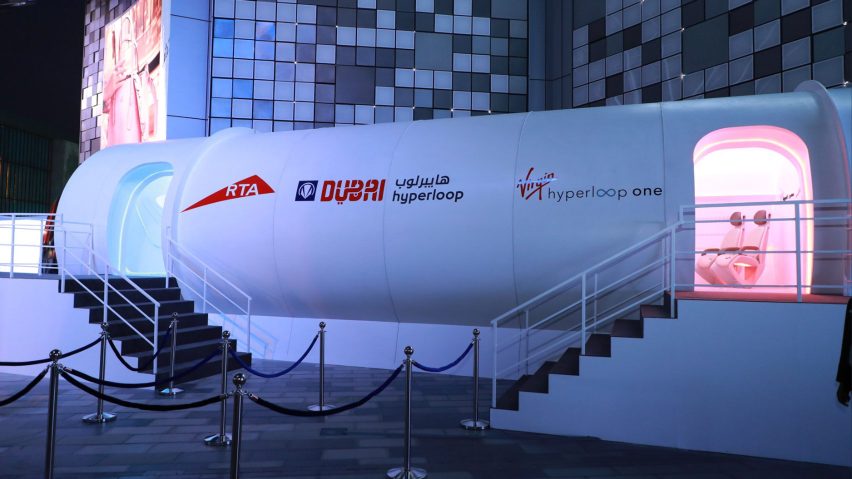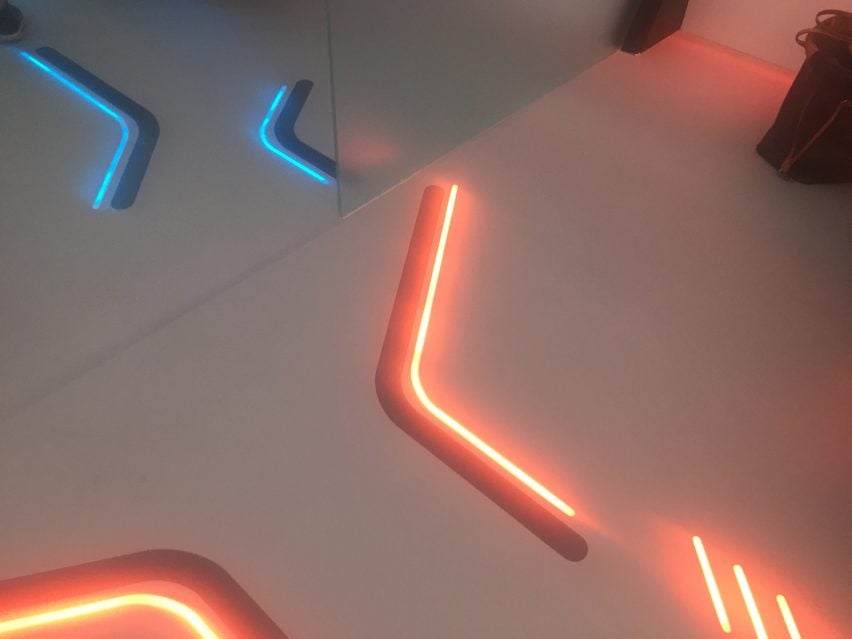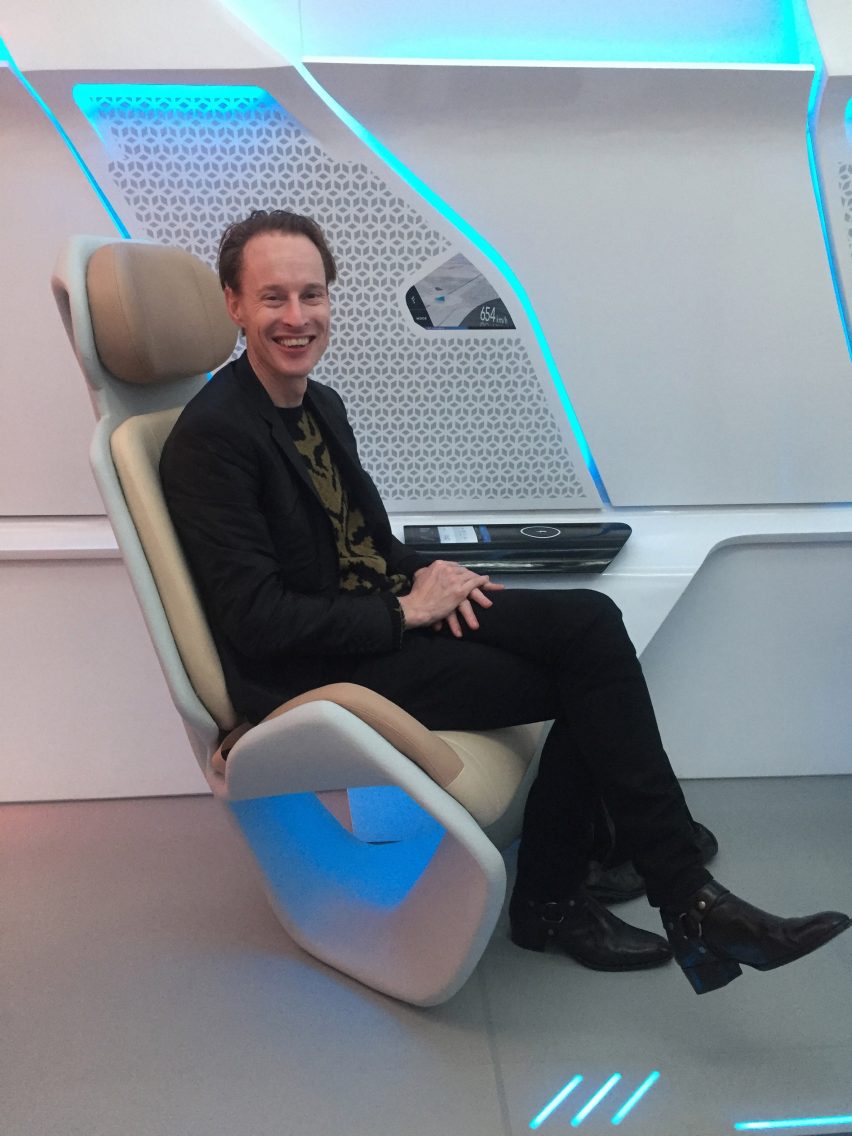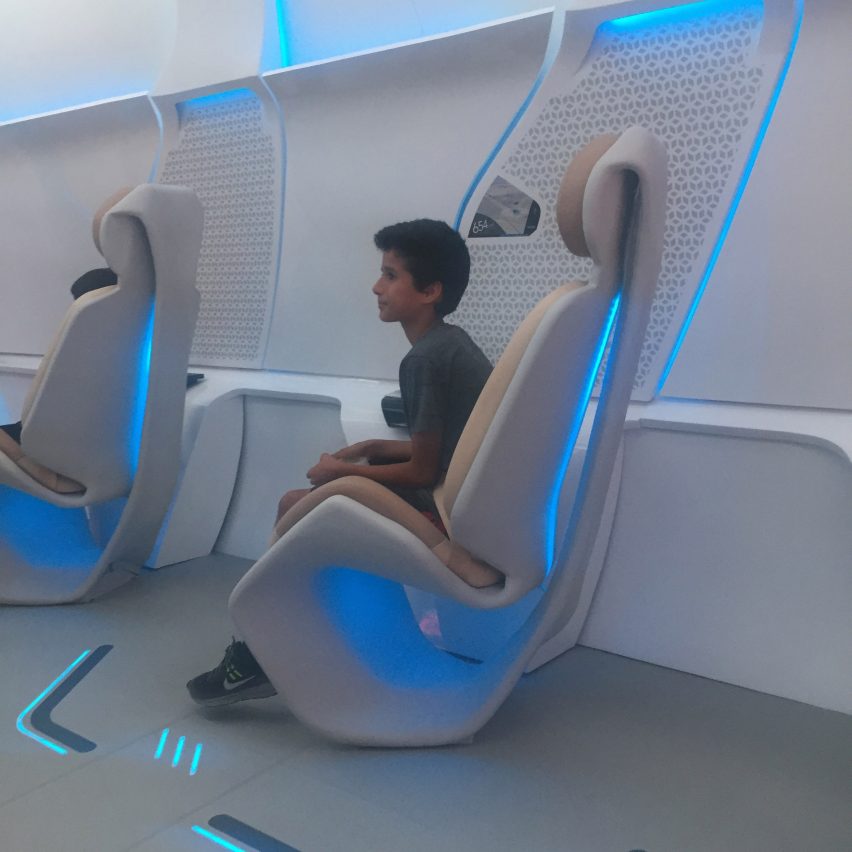
Virgin unveils first prototype of Hyperloop One passenger pod
Virgin has revealed a prototype design of the pods that will be used on the Hyperloop One network to transport passengers between Dubai and Abu Dhabi in just 12 minutes.
As part of UAE Innovation Month, Virgin's Hyperloop One collaborated with Dubai's Road Transport Authority (RTA) to present a full-scale model of the passenger pod at Dubai's City Walk mall.
Each pod is designed to accommodate up to 10 people, and as a completed service will be able to transport approximately 10,000 passengers per hour, both to and from Dubai.
The sleek, futuristic-looking capsule features a plush white interior, with high-definition screens for displaying information and entertainment materials.
It also has cream and beige leather seats, which Dubai newspaper Khaleej Times claims to have been designed by German car manufacturer BMW.

Blue and red neon lights illuminate the interior space, positioned along the walkway, the walls and ceiling, and embedded in the seating.
"There will be no windows. However, there will be interactive entertainment screens at the armrest of the seats. The seats have been designed in a very futuristic manner," Abdulredha Abu Alhassan, executive director at the RTA, told the Khaleej Times.
Also according to the publication, the pods will be divided into two classes, a "gold class" – which will seat five passengers – and a "silver class" – which will seat 14.

Dutch designer Daan Roosegaarde was among those who attended the Innovation event, where he trialled the new pod interior.
"It's a great design, really like a bubble of material and light," Roosegaarde told Dezeen. "I can't wait to use it to travel in 12 minutes to Abu Dhabi soon."
Planned to launch as soon as 2020, the high-speed transportation system will be able to take passengers on the 87 mile-long (140 kilometres) journey between the city and Abu Dhabi in 12 minutes – a route that takes around 90 minutes by car.
It will also be able to reach Riyadh in 48 minutes, Doha in 23 minutes and Muscat in 27 minutes.
Each 8.7-metre-long pod gradually accelerates via electric propulsion through a low-pressure tube. The pod's wheels retract as the magnetic levitation takes over.
Hovering above the track, the 3.3-metre-diameter pods would be able to travel at airline speeds for long distances due to ultra-low aerodynamic drag.

Hyperloop was first conceived by Tesla and Space X founder Elon Musk in 2013, but the billionaire entrepreneur is no longer directly involved with any companies developing the technology.
Following a major investment from Richard Branson's company, the transportation system was renamed Virgin Hyperloop One in October 2017.
The first successful test run of a full-scale Hyperloop pod was carried out in August 2017 by the Virgin team, at its 500-metre DevLoop test site in Nevada, where the pod reached speeds of 190 mph (305 kph) in about five seconds, before safely coming to a stop.
Since then, Virgin has reported that the longest test duration has been 10.6 seconds, with the top speed of 192 mph (310 kph) – or 86 metres per second. The maximum distance travelled has been 436 metres.
Images courtesy of Daan Roosegaarde, unless otherwise stated.